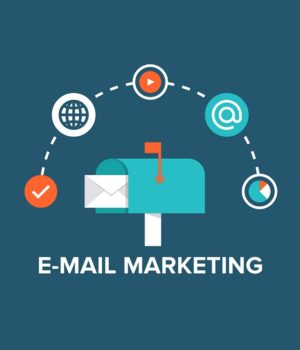Email marketing has a ROI of a whopping 124 percent and that is why it has undoubtedly emerged as one of the best marketing channels for the B2B business.
However, despite it being such an influential marketing channel, not every business has been able to leverage it properly. The main reason behind this underutilization of email marketing is not paying the right kind of attention to inbound marketing strategy in their email campaigns.
So, if your B2B business is unable to garner enough engagement and conversions, it is high time that you incorporated inbound marketing into your email strategy.
Gone are those days when outbound marketing’s pesky, self-promoting sales emails were pushed into the subscriber’s inbox. Now, the customers are more focused on receiving relevant, personalized and valuable emails in their inbox.
Therefore, if you wish to meet the industry standards of having an open rate of more than 16 percent, go the inbound marketing way.
From helping you to nurture leads to retaining your existing customers, a well-crafted inbound email marketing strategy can help you do it all.
How can you incorporate inbound marketing in your email strategy?
Take a look at the different stages of inbound marketing that can help you do the needful.
1. Attract the subscribers
The first and foremost step of inbound marketing is attracting the subscribers to your website. This stage comes way before email marketing can be applied. You can do this by involving search engine optimization (SEO) and social media marketing strategies.
2. Make visitors convert into leads
Once a visitor finds your website, the next challenge is to convert them into leads. You can do this by asking for their email address. However, instead of directly asking for it, acquire it by giving them something valuable like ebooks, white papers and so forth in return.
This will help you grow a genuine email list because only the visitors who are interested in your services will give you their email address.
Furthermore, once you have their email address, all you need to do is send them a welcome email to create a first good impression.
Here’s how a welcome email can help you:
- It helps you set up a communicative tone with your prospective customer by informing them about your brand and the emails you will be sending.
● It not only makes the subscribers feel valued, but also leaves a lasting impression of your brand.
● It strengthens your brand image and accelerates engagement.
Now, since you know the benefits of a welcome email, start sending it as soon as a subscriber signs up for your business. You can take the help of automation for making the whole process smooth and easy for you.

3. Nurture the leads
After attracting the subscribers and converting them into leads, the next step is to nurture them. This can be done by sending lead nurturing emails.
In this context, knowing your lead well can help you send the right email at the right time. This can be done either by asking them some basic questions during the sign-up process or by closely monitoring their browsing history.
This information can help you segment them properly and send the emails that best suits their needs.
Here’s a detailed look at how it can help you in the long run of your business:
- Nurturing emails are sent on the basis of personalized needs and preferences of customers. So, the chances of them going to the next step of the sales funnel become very high.
● It serves as a great way of upselling and cross-selling your products and services to your existing customer base.
In short, from sending customers customized emails to targeting them with products that best suits their needs, lead nurturing emails help you to do it all. So, make sure you leverage the most out of it.
4. Delighting the nurtured leads
Converting and nurturing your leads is the last step is delighting your customers. Remember, retaining customers is as important as attracting them. So, it is imperative to keep them hooked with your brand.
You can do this by making them feel valued for their loyalty. A discount offer, a free trial to a premium service or just a simple greeting for being a part of your brand is enough to delight a customer and improve your relationship with them.
Let’s take a look at some of the benefits of delight emails:
- It helps you provide customers with a consistently enticing offer. This, in turn, converts them into your loyal brand advocates.
● The chances of word of mouth promotion increases through delight emails. This is a great way of initiating the referral marketing program.
● The consistency of delight emails persuades customers to buy more, thereby accelerating your sales.
To put it in other words, there is no end to customer satisfaction. So, you need to be on your toes all the time. This is where delight emails can come in handy and provide a seamless customer experience to your loyal buyers.
In conclusion, inbound email marketing strategy helps a business send relevant emails to a well segmented and targeted audience. Inbound marketing can be your one-stop destination for all your business needs, goals and objectives, be it for connecting with your customers on a personal level or generating leads and revenue.
Kevin George is the Head of Marketing at EmailMonks – one of the fastest growing Email design and coding companies, specializes in crafting beautiful email templates, PSD to HTML email conversion and free HTML email templates. He loves gadgets, bikes, jazz, and breathes ‘email marketing’. He enjoys sharing his insights and thoughts on email marketing tips and best practices at his email marketing blog.
